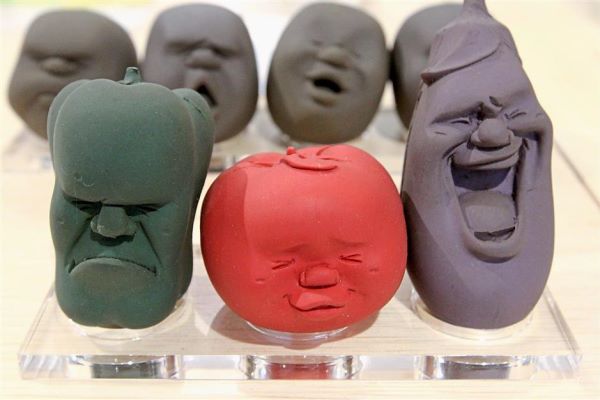
Selling products aside, Saw (left) and Chin hope to spark creativity and inspiration. — Photos: SAM THAM/TheStar
Three guys with a penchant for all things design band together to get the South-East Asian distribution rights from Japanese homeware and gift retailer, Koncent. Their first store is at Sunway Mas Commercial. KELLY TEY checks it out.
MIKE Saw and his business partners, Patrick Chin and Leonard Phang, are convinced that there’s a market for design-centric lifestyle items in Malaysia. And that’s why three months ago, they set up the first Koncent store in the Klang Valley.
A Japanese franchise, the homeware and gift store in Sunway Mas Commercial Centre carries a variety of goods such as stationery, kitchenware, utensils and furniture — all of which emphasise good design.
Saw says koncent means “power plug” in Japanese — a point for connectivity and recharge which, in this instance, represents connecting with people through design.
“Koncent is the retail arm of Tokyo product design consultation company, h-concept, which works with various manufacturers in Japan as well as a huge network of designers to produce innovative items,” Saw explains.
h-concept has been around for over 14 years, but its own retail store was only established in 2012. Two year before this, Saw and his partners had already developed a working relationship with the company.
“Because of our penchant for design and our background (they run an interior and graphic design firm), we’ve always been into design-related activities. Once in Singapore, we caught sight of h-concept’s products and we made a call to enquire further,” recalls Saw.
“We learned that they already have a sizable collection of brands and products, and that they had been exporting to other countries.”
When the trio discovered that h-concept had yet to have a distribution representative in Malaysia, they made their move and managed to obtain the distribution rights for the entire South-East Asian market.
“We have been actively distributing products to Singapore, Bangkok and the Philippines since 2012,” says Saw.
Today, Koncent Malaysia carries 65% of products from h-concept, 25% from other Japanese brands, with the remaining 10% made up of a mix of local, Taiwanese and Thai products.
Prior to setting up Koncent in Malaysia, the trio had ventured into retail with The Jekyll and Hyde Project.
“The small 200sq ft space in what used to be in a major mall in KL was where we first introduced h-concept items, which tested well with our consumers,” says Saw, adding that the shop has since ceased operations.
“Now we have a 157.9sqm outlet that allows us to host activities and workshops where we’re also able to showcase local artists,” he adds.
Saw says the decision to move out of the malls was to counter rising costs.
“We’re selling a very niche selection of items. It isn’t meant for the masses to begin with, and we wouldn’t expect mall regulars to frequent our shop and make purchases every day.
“You don’t capture a new crowd like that,” he argues, adding that at the new location, they are able to draw like-minded audiences through social media platforms.
Saw says pricing is another challenge.
“Our products are popular among customers. They are taken by it, but their concerns are always with the price tag,” he observes.
While he understands this predicament, Saw says niche goods are rarely cheap.
“We could bring in cheaper items, but it’s not what we want to do because we emphasise quality and well thought-out products,” he stresses.
“Financially, it seems like a sound choice when one purchases a cheaper wear-and-tear solution, but if you keep replacing them, what are you doing to the environment?” Saw asks.
He puts it down to a different kind of mindset — one that is only starting to take hold here.
The essence of a good design, Saw explains, is something that is conscientious, has a longer life expectancy and is able to give users subconscious joy due to the ease and comfort of use.
As with other retailers, Koncent Malaysia has to sell products to keep operations afloat, but Saw says they are a design platform first and foremost.
“We see it as a way to communicate to people what good designs constitute, what designs are trending in the Japanese market, and what are considered high-standard designs,” Saw asserts.
This also works to the advantage of those who wish to broaden their horizons but do not necessarily have the means to travel.
“Everyone is welcomed to browse, touch and experience. We want them to open their minds and absorb as much as they can,” says Saw, adding that they have a cafe and library corner for visitors to enjoy the experience at leisure.
“There was a time when Malaysia had a market for things like these, but that changed, and it is headed into the direction of catering to the masses with cost-effective solutions.
“When everything starts to centre around lowering costs, variety becomes scarce and the selection of products just become safe,” says Saw.
“We just want to bring back that market for creativity,” he declares.
In the long run, Saw says they hope to help be the impetus for export-ready “Made in Malaysia” design products.
“Japanese design products are our main focus, but we’d like to slowly grow competitive local designs. Many of our younger talents are skilled in what they do, but their results are not market-ready. Furthermore, our manufacturers are also not ready to accept these sort of things,” Saw points out.
“This is one thing I hope the country will finally break into as a means to boost alternative trade for the country,” he concludes.















































